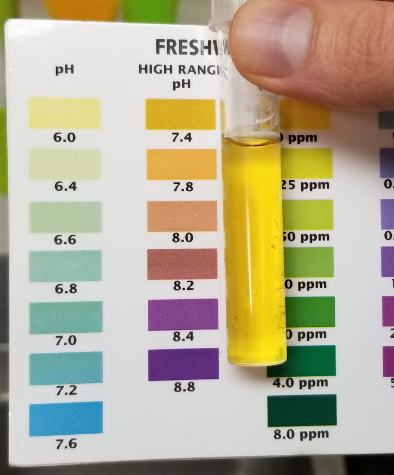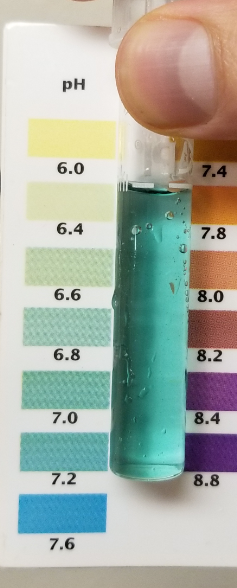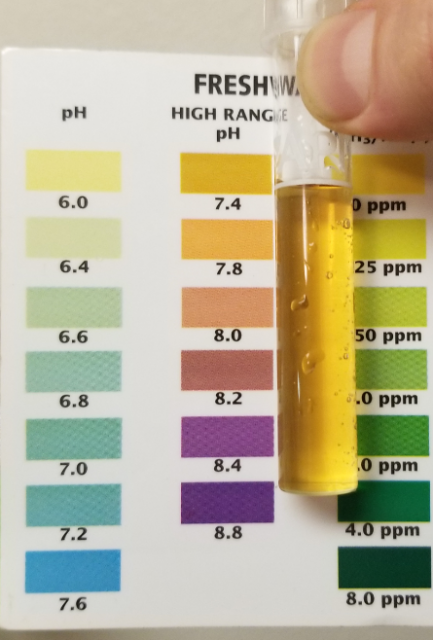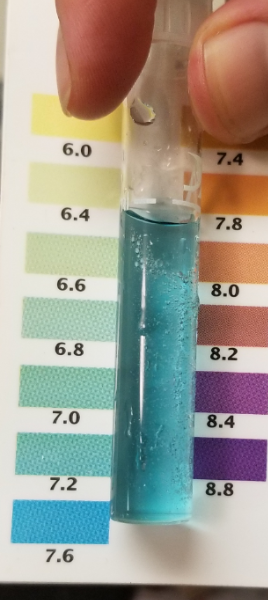Beanie Seagus
Members
Hi all, a former CCA member here, now out on the west coast In Berkeley California.
With the covid crisis I have found myself with enough time to finally start up some fish tanks.
Problem is I just got around to checking my water parameters out of the Tap, and they are very disappointing.
The pH read off of my tap water (using an API freshwater master test kit and its High Range pH test) shows a dark bright purple when i first shake up the vile, suggesting a pH of 8.8 or higher. Admittedly the color eases off after a few moments, but i suspect thats because the testing particles are falling out of solution.
Upon looking at a local water quality report for Albany/Berkeley, CA fo 2019, the story seems to get even worse. Their figures, based strictly on the water treatment plant where my tap water comes from, suggest a pH range of 9.2 - 9.4. It also provided the following readings regarding hardness (though i'm less certain how to interpret these)
Alkalinity, Total as CAc03 (ppm) 22-44
Calcium (ppm) 4-8
Hardness as CaCO3 (gpgf) 1-2
Hardness as CaCO3 (ppm) 14-34
Magneisum (ppm) 1-2
Potasium (ppm) < 1-1
Up until now I've definitely been of the mentality to condition your fish to accept your water, and not the other way around, but given these parameters I'm concerned that I may not be able to keep fish at all!
Are there reliable, and preferably natural ways, to bring the pH down? And for that matter, whats the highest pH I could reasonably expect dwarf cichlids, loaches, tetras, corydoras, and killifish to live in?
With the covid crisis I have found myself with enough time to finally start up some fish tanks.
Problem is I just got around to checking my water parameters out of the Tap, and they are very disappointing.
The pH read off of my tap water (using an API freshwater master test kit and its High Range pH test) shows a dark bright purple when i first shake up the vile, suggesting a pH of 8.8 or higher. Admittedly the color eases off after a few moments, but i suspect thats because the testing particles are falling out of solution.
Upon looking at a local water quality report for Albany/Berkeley, CA fo 2019, the story seems to get even worse. Their figures, based strictly on the water treatment plant where my tap water comes from, suggest a pH range of 9.2 - 9.4. It also provided the following readings regarding hardness (though i'm less certain how to interpret these)
Alkalinity, Total as CAc03 (ppm) 22-44
Calcium (ppm) 4-8
Hardness as CaCO3 (gpgf) 1-2
Hardness as CaCO3 (ppm) 14-34
Magneisum (ppm) 1-2
Potasium (ppm) < 1-1
Up until now I've definitely been of the mentality to condition your fish to accept your water, and not the other way around, but given these parameters I'm concerned that I may not be able to keep fish at all!
Are there reliable, and preferably natural ways, to bring the pH down? And for that matter, whats the highest pH I could reasonably expect dwarf cichlids, loaches, tetras, corydoras, and killifish to live in?







